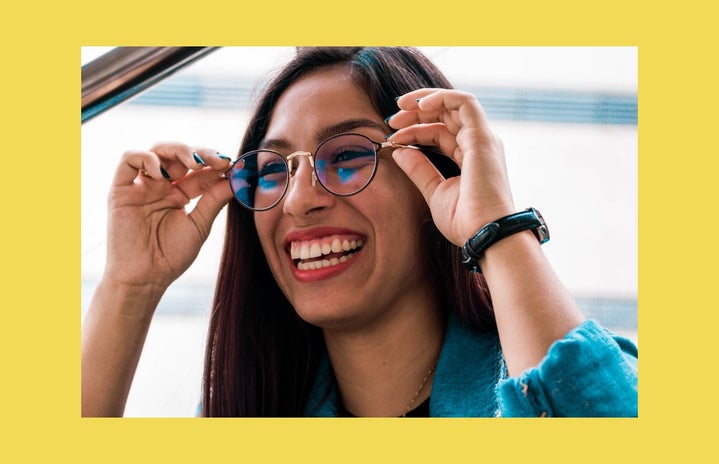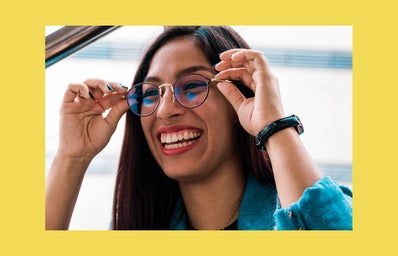One of the trendy investments of quarantine season are blue light glasses. With work and school being online, bluelight glasses seem to be in everyone’s Amazon carts these days because they prevent eye strain and they are really cute. But do they actually help or are they just hype?
I tested out the trend and purchased a few pairs of my own to use in class. Here are the facts and myths I discovered:
- Myth: Blue Light Isn’t Natural
-
Most blue light comes from the sun, so we were receiving plenty of it before technology advanced. Blue light has a short wave-length, meaning it produces higher amounts of energy. It exists in nature, but didn’t really hit the news until digital technology became more common.
- Fact: Blue Light Isn’t Always Harmful to the Eyes
-
Blue light can be beneficial. It helps boost alertness, heightens reaction times and elevates one’s mood. Those who suffer from seasonal depression experience better sleep patterns when exposed to larger doses of blue light.
The reason people are purchasing these glasses is because they think it will prevent damage to their eyesight, yet, blue light doesn’t cause long term damage to the retina. It can, however, cause tearing, burning and stinging of the eyes due to the straining of our muscles that help our eyes focus.
- Myth: Blue Light Glasses Help Us Sleep Better at Night
-
Have you ever been told that if you’re on your phone late at night, you will have trouble falling asleep? This is partially true. Blue light triggers the suppression of melatonin in the brain, keeping us awake.The glasses keep blue light from holding back our production of melatonin. They help us fall asleep more easily.
- Fact: There are Other Ways to Dial Back on Blue Light
-
Obviously, not everyone needs to purchase blue light glasses to avoid getting headaches while using their laptops. There are plenty of other tips to help protect our eyes and our sleep schedule.
The best tip is to give your eyes a break! Try putting your phone away at least an hour before you go to bed. Easier said than done, I know. Set your phone to “night shift” in the evenings and position yourself at least 25 inches away from your screen.
Ever heard of the 20-20-20 rule? Many vision organizations like The Vision Council, recommend that after 20 minutes of using a digital device, stare at an object at least 20 feet away for approximately 20 seconds to give your eyes a break. Continue the 20-20-20 rule while on your screen for extended periods of time.
- Wearing Them is Totally Worth It
-
I loved these glasses. I experienced a lot of migraines last spring and remember having to shut my camera off during class and just relax my eyes because of how tired and dry they became. I honestly felt a difference in how much more focused I was when wearing the glasses. Also, they are freaking cute!
I am definitely guilty of falling prey to the “fashion glasses trend” where I find myself wearing them out to eat or with my outfits and not just for screen purposes. But they were so worth the investment. They were affordable, convenient and made such a difference in my productivity.
If you are thinking about purchasing a pair for school, work or just because you are tired of your eyes straining and burning, here are my favorites.
Photos: Her Campus Media Library



